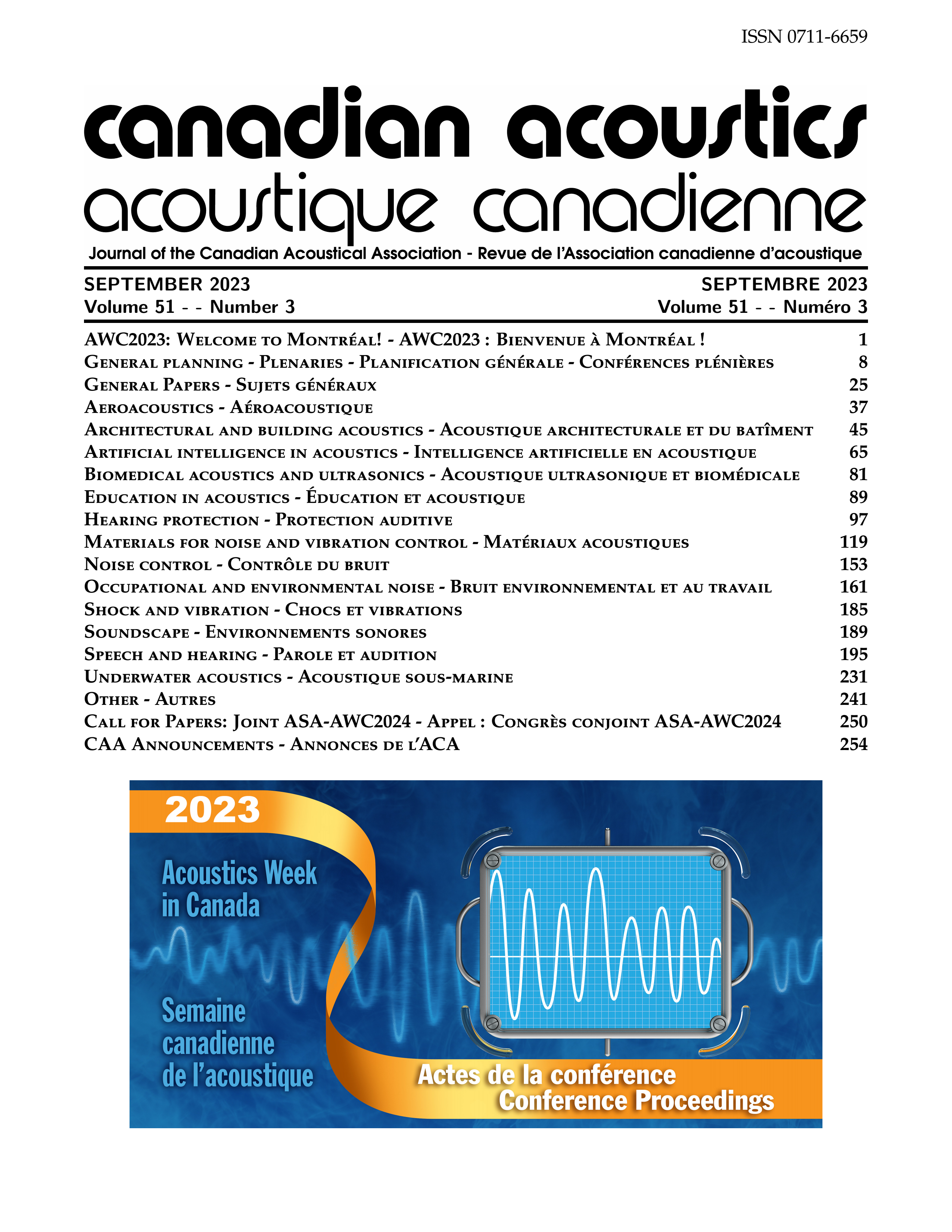Airborne Sound Transmission in Cross-Laminated Timber Buildings: The Influence of Building Height
Abstract
Buildings with cross-laminated timber (CLT) has gained increasing popularity in several countries. In addition, buildings constructed with CLT are increasing in building height, which increases the load on the junctions and structural building elements lower down in the buildings. Furthermore, CLT offers sustainable features that can help the building industry to reduce greenhouse gas emissions. Several studies have investigated how the load affect the sound insulation between apartments. The majority of the studies show that increasing load tends to have a negative effect on the vertical sound insulation. However, most results are based on a limited number of measurements with investigations focusing on junctions with resilient interlayers. This paper will show in more detail how the building height, and thus the load, affect the vertical airborne sound insulation between apartments in several CLT buildings. Moreover, this paper will include buildings with and without viscoelastic interlayers in their junctions as well. Measurements were performed in four CLT buildings with varying construction systems, building heights and presence or absence of viscoelastic interlayers in their junctions. The vertical airborne sound insulation between different rooms in apartments located at both lower and higher levels was evaluated. By calculating the differences in airborne sound insulation for each building, the results clearly show a decrease in the vertical airborne sound insulation in the lower parts of the buildings compared to higher up. Consequently, these results show that an increased number of floors negatively affects the vertical airborne sound insulation lower down in the buildings.Additional Files
Published
How to Cite
Issue
Section
License
Author Licensing Addendum
This Licensing Addendum ("Addendum") is entered into between the undersigned Author(s) and Canadian Acoustics journal published by the Canadian Acoustical Association (hereinafter referred to as the "Publisher"). The Author(s) and the Publisher agree as follows:
-
Retained Rights: The Author(s) retain(s) the following rights:
- The right to reproduce, distribute, and publicly display the Work on the Author's personal website or the website of the Author's institution.
- The right to use the Work in the Author's teaching activities and presentations.
- The right to include the Work in a compilation for the Author's personal use, not for sale.
-
Grant of License: The Author(s) grant(s) to the Publisher a worldwide exclusive license to publish, reproduce, distribute, and display the Work in Canadian Acoustics and any other formats and media deemed appropriate by the Publisher.
-
Attribution: The Publisher agrees to include proper attribution to the Author(s) in all publications and reproductions of the Work.
-
No Conflict: This Addendum is intended to be in harmony with, and not in conflict with, the terms and conditions of the original agreement entered into between the Author(s) and the Publisher.
-
Copyright Clause: Copyright on articles is held by the Author(s). The corresponding Author has the right to grant on behalf of all Authors and does grant on behalf of all Authors, a worldwide exclusive license to the Publisher and its licensees in perpetuity, in all forms, formats, and media (whether known now or created in the future), including but not limited to the rights to publish, reproduce, distribute, display, store, translate, create adaptations, reprints, include within collections, and create summaries, extracts, and/or abstracts of the Contribution.


